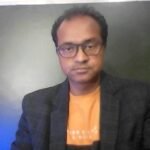Democratic Republic of Congo (DR Congo): Africa’s Heartbeat of Nature and Potential
The Democratic Republic of Congo, often abbreviated as DR Congo or DRC, is one of Africa’s most vast and resource-rich countries. Located in Central Africa, it is a land of extraordinary natural wealth, diverse cultures, and complex history. From the mighty Congo River to dense rainforests teeming with wildlife, DR Congo holds a unique place in the African continent. This comprehensive guide explores the geography, history, culture, economy, challenges, and future prospects of the DRC.
Geography and Climate of DR Congo
DR Congo is the second-largest country in Africa by area, spanning approximately 2.34 million square kilometers. It borders nine countries: Angola, Burundi, Central African Republic, Republic of Congo, Rwanda, South Sudan, Tanzania, Uganda, and Zambia.
The country’s geography is dominated by the Congo Basin, home to the world’s second-largest tropical rainforest after the Amazon. This rainforest is a crucial ecological zone, rich in biodiversity and natural resources.
The Congo River, Africa’s second-longest river, flows through the country, providing a vital transport route and supporting fishing and agriculture.
The climate is predominantly tropical, with hot, humid conditions and heavy rainfall in the rainforest regions. The eastern highlands have a more temperate climate, while the southern and southwestern areas are relatively drier.
Historical Overview
DR Congo’s history is deeply intertwined with its colonial past. Before colonization, it was home to many powerful kingdoms and ethnic groups such as the Kongo, Luba, and Lunda.
In the late 19th century, King Leopold II of Belgium claimed the region as his personal possession, naming it the Congo Free State. This period was marked by brutal exploitation and atrocities, causing immense suffering to the Congolese people.
In 1908, international pressure led to Belgium taking official control, and the territory became the Belgian Congo. The country gained independence in 1960, adopting the name Republic of Congo (later changed to Democratic Republic of Congo to distinguish it from the neighboring Republic of Congo).
The post-independence period was turbulent, with political instability, civil wars, and foreign interventions. The First and Second Congo Wars (1996-1997 and 1998-2003) devastated the country and neighboring regions.
Today, DR Congo continues to rebuild and stabilize, though it faces ongoing security and governance challenges.
People and Culture
DR Congo is one of Africa’s most ethnically diverse countries, with over 200 ethnic groups and languages spoken. Major ethnic groups include the Luba, Kongo, Mongo, and Tutsi.
French is the official language, while Lingala, Swahili, Kikongo, and Tshiluba are widely spoken as national languages.
Congolese culture is vibrant, with rich traditions in music, dance, art, and storytelling. The country is famous for genres like Soukous and Rumba, which have influenced music across Africa.
Traditional ceremonies, colorful festivals, and unique art forms such as mask-making and sculpture are integral to cultural identity.
Economy and Natural Resources
DR Congo’s economy is heavily reliant on its abundant natural resources. It is one of the world’s richest countries in terms of mineral wealth, including cobalt, copper, diamonds, gold, coltan, and tin.
Mining accounts for a significant portion of GDP and export revenues. Cobalt and coltan are especially important globally, as they are key components in batteries and electronics.
Agriculture employs a large part of the population, with crops like cassava, maize, bananas, and coffee.
Despite its vast wealth, DR Congo is one of the poorest countries due to decades of conflict, corruption, and weak infrastructure.
Efforts to improve governance, infrastructure, and diversify the economy are ongoing.
Wildlife and Natural Wonders
DR Congo boasts some of Africa’s most spectacular natural sites and wildlife.
The Congo rainforest is home to endangered species such as the mountain gorilla, okapi, forest elephants, and chimpanzees.
Virunga National Park, Africa’s oldest national park and a UNESCO World Heritage Site, is famous for mountain gorilla conservation and active volcanoes.
Garamba National Park, Kahuzi-Biega National Park, and Salonga National Park are other protected areas rich in biodiversity.
The Congo River and its tributaries support diverse aquatic life and communities.
Challenges and Development
DR Congo faces significant challenges. Political instability and armed conflicts continue to affect parts of the country, especially in the east.
Poverty, limited access to education and healthcare, and inadequate infrastructure hinder development.
Environmental degradation, including deforestation and mining impacts, pose threats to biodiversity.
International organizations and the government work toward peacebuilding, economic reforms, and sustainable development.
DR Congo on the Regional and Global Stage
DR Congo plays an important role in Central African politics and regional cooperation.
It is a member of the African Union (AU), Southern African Development Community (SADC), and International Conference on the Great Lakes Region (ICGLR).
The country’s mineral resources are crucial for global industries, linking it to international markets and supply chains.
Future Outlook
The future of DR Congo holds both challenges and opportunities. Peace and stability remain priorities for sustainable development.
With proper management, its natural resources can drive economic growth and improve living standards.
Investment in education, healthcare, infrastructure, and governance is vital for progress.
The resilience and cultural richness of its people are key assets for the country’s transformation.
Conclusion
The Democratic Republic of Congo is a land of immense natural beauty, cultural wealth, and untapped potential. Despite facing significant obstacles, the country continues to strive toward peace and prosperity.
From the depths of the Congo rainforest to the bustling streets of Kinshasa, DR Congo remains a vital part of Africa’s story and future.




One response to “Democratic Republic of Congo”
[…] peace process followed, and since then, Côte d’Ivoire has made significant strides toward peace, reconciliation, and economic […]